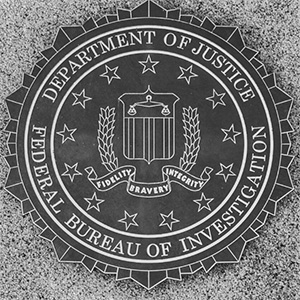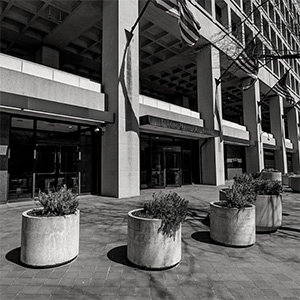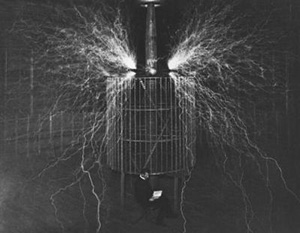
The FBI declassified its files on Nikola Tesla on September 21st, 2016, but some uncertainties persist. Following Tesla’s death in a New York City hotel room in 1943, the U.S. government’s Office of Alien Property obtained many documents related to his work as an inventor.
During the peak of World War II, Tesla claimed to have created a formidable particle-beam weapon referred to as the “Death Ray.” Fearing the technology could fall into the hands of America’s foes, the government swiftly took control of all of Tesla’s property and documents from his room at the New Yorker Hotel to prevent any risks.
The fate of Tesla’s files and their contents remain a mystery and a source of conspiracy theories. After facing questions about potential cover-ups, the FBI released 250 pages of Tesla-related documents through the Freedom of Information Act in 2016 and added two more releases in 2018, but many questions still remain unanswered, and some of Tesla’s files are yet to be found.
Three weeks after Tesla's death, an electrical engineer from MIT, Dr. John G. Trump, was assigned to assess his papers to see if they held “any ideas of significant value.” According to the declassified files, Dr. Trump reported that his analysis found Tesla's efforts to be “primarily of a speculative, philosophical, and promotional nature” and stated that the papers “did not contain new practical, feasible principles or methods for achieving results.”
The name John G. Trump is likely familiar as he was the uncle of the 45th U.S. President, Donald J. Trump. He was the younger brother of Fred, Donald's father, and was involved in designing X-ray machines that greatly aided cancer patients and radar research for the Allies during World War II. During his presidential campaign, Donald often referenced his uncle's credentials, stating in an interview, “My uncle used to tell me about nuclear before nuclear was nuclear.”

At the time, the FBI used Dr. Trump's report to argue that Tesla's claimed “Death Ray” particle beam weapon was nothing more than rumors and speculation. However, the U.S. government's response was divided. According to Marc Seifer, author of the biography “Wizard: The Life & Times of Nikola Tesla,” a group of military personnel at Wright Patterson Air Force Base in Dayton, Ohio, led by Brigadier General L.C. Craigee, had a contrasting view of Tesla's technology.
“Craigee was the first person to ever fly a jet plane for the military, so he was like the John Glenn of the day,” Seifer says. “He said, ‘there's something to this—the particle beam weapon is real.' So you have two different groups, one group dismissing Tesla's invention, and another group saying there's really something to it.”
Additionally, the absence of some of Tesla's files raises concerns. After his passing, Tesla's belongings were supposed to be passed down to his nephew Sava Kosanovic, who was serving as the Yugoslav ambassador to the U.S. at the time. According to recently disclosed documents, some in the FBI were worried that Kosanovic might try to gain control of Tesla's technology and provide it to the enemy, even going as far as to consider his arrest to prevent it.
In 1952, a U.S. court ruled that Tesla's nephew Sava Kosanovic was the rightful heir to his uncle's estate, and the inventor's files and other belongings were sent to the Nikola Tesla Museum in Belgrade, Serbia. However, the FBI's initial records show 80 trunks among Tesla's possessions, but only 60 arrived in Belgrade. There is speculation that the 20 missing trunks could have been kept by the government.

For the HISTORY series “The Tesla Files,” Marc Seifer teamed up with Dr. Travis Taylor, an astrophysicist, and Jason Stapleton, an investigative reporter, to uncover the truth about the missing files and the government's views on Tesla's “Death Ray” particle-beam weapon and other inventions. Despite Dr. John G. Trump's initial negation of Tesla's ideas, the military attempted to develop particle-beam weapons in the years after World War II, says Seifer. The “Death Ray” concept even influenced Ronald Reagan's Strategic Defense Initiative, or “Star Wars,” in the 1980s. If the government continues to utilize Tesla's ideas in its technology, the classification of some of Tesla's files may be the reason, suggests Seifer.
The 2016 release of FBI documents showed that Henry Wallace, Vice President under Franklin D. Roosevelt, talked about Tesla’s work, particularly on wireless energy transmission and the “Death Ray,” with his advisors. In The Tesla Files, Marc Seifer and his team investigated the involvement of Vannevar Bush, who was appointed head of the Manhattan Project by FDR, in evaluating Tesla’s papers. They also explored the possibility of FDR potentially seeking a meeting with Tesla before his death.
In the series “The Tesla Files,” Seifer, Taylor, and Stapleton explored key locations in Tesla’s life, including his laboratory in Colorado Springs, his last dwelling at the Hotel New Yorker, and the enigmatic wireless tower he constructed at Wardenclyffe, Long Island. They also journeyed to California, where some of Tesla’s innovative ideas, once deemed unrealistic or even fanciful, now drive some of the most thriving industries in Silicon Valley.
The impact of Tesla’s innovations is still felt today in the devices we use and the technologies that will shape our future. Tesla is credited with inventing wireless technology and the ability to create numerous wireless channels. As a result, radio guidance systems, encryption, and remote control robots all stem from Tesla’s technology, as noted by Seifer.